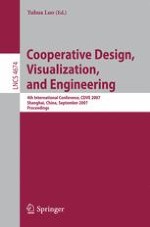This year the CDVE conference celebratedits fourth annual eventin an exciting city—Shanghai, China. The cooperative design, visualization and engineering communitysensedtheeconomicpulseofanewgianteconomywherecooperation is vital for its success. This year we received a large number of papers from all over the world. In addition to many submissions from Europe, we received more papers from Asia and China this time. Many authors from key Chinese research centers and national projects presented their papers, which gave us insight into the progress of research and development in this giant economy. From a technical point of view, as a major trend in cooperative design, vi- alization, engineering and other applications, advanced Web-based cooperation technology stands out by itself. Many papers re?ect the research in this aspect with very convincing results. Web-based cooperative working applications have been emerging strongly since the wide availability and accessibility of the WWW. It is a form of sharing andcollaboratingbyitsnature.Itissuitable forthe cooperationofamuchwider range of users. In the ?eld of cooperative engineering, new ?ndings and new results were presented. Among all, work ?ow technology was recognized as a key element for successful cooperative engineering. According to these new ?ndings, only Web-based cooperation tools and shared databases are not enough for coop- ative engineering. Work?ow-based methodology should be introduced to gu- antee the integration and coordination of the whole life cycle process of products.
